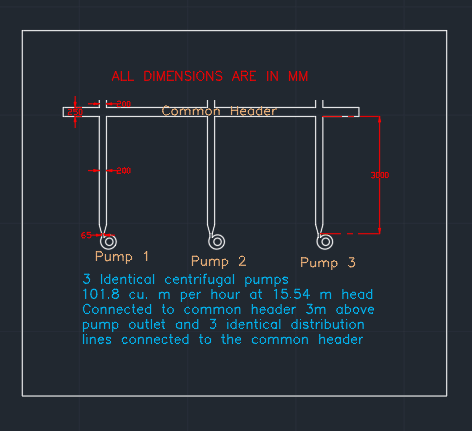TeaPotPilot
Mechanical

Hello everyone,
I am trying to calculate the flow rate at the outlets from a common header which receives water from 3 identical pumps through 3 identical risers. I have attached a diagram here for clarification of the case here.
1. The output of pump is 100 cubic meters per hour at 15.54m head.
2. Diameter of pump outlet is 65mm.
3. Diameter of riser is 200mm and length is 3m.
4. Diameter of Common Header is 250 mm.
5. Diameter of branches from header is 200mm.
What I am not being able to figure out is what kind of head loss occurs at the entrances to common header and exits from the common header and how can I calculate the losses?
